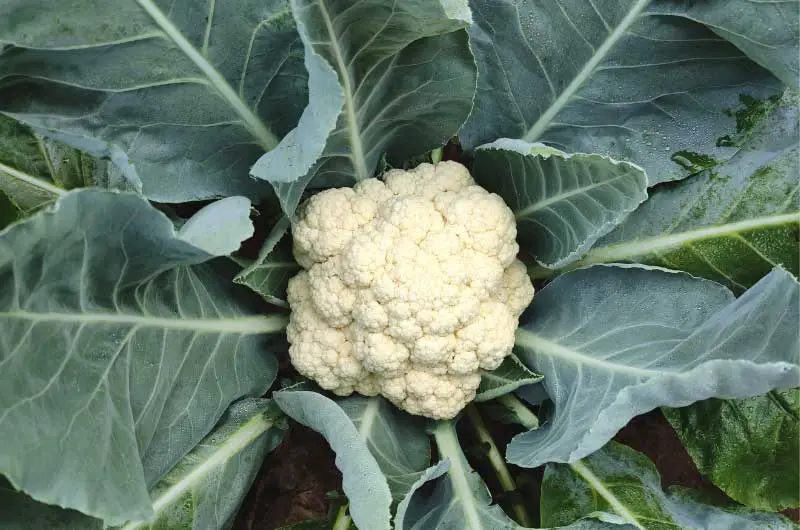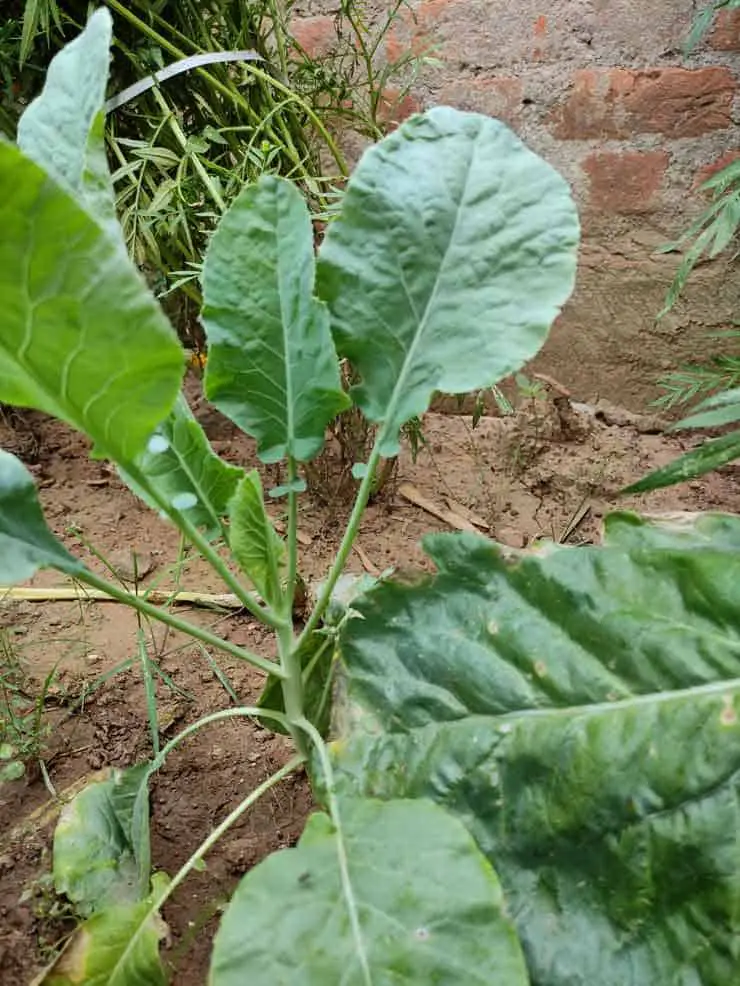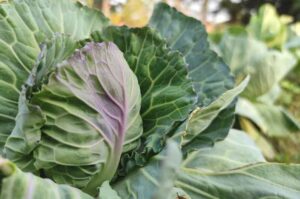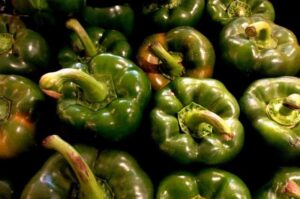Why my cauliflower leaves are turning yellow?
Cauliflower is an important cruciferous vegetable grown around the globe, for its long list of nutrient content and delicious taste.

Cauliflower, Brassica oleracea var. Botrytis is a well-known vegetable crop belonging to the family Brassicaceae, which also includes cabbage, broccoli, Brussels sprouts, kale, etc. Brassicaceae is an economically important family that also includes mustard.
Growing cauliflower is surely a difficult task because the plant is very particular about its climatic requirement. Low temperature during the growing period, moist soil without water logging condition, insect pest-free growing environment are some important requirements without which the cauliflower will not give the expected yield.
Many growers also face some issues related to cauliflower cultivation, like in some cases the cauliflower leaves turn yellow. It may occur due to several reasons. In this article, we are going to discuss all the probable reasons and their solutions.
Why my cauliflower leaves are turning yellow?
When the leaves of a plant lose their chlorophyll pigments, they appear yellow. Also due to some insect pests or disease incidence or physiological stress, the leaf may change its color to yellow. There are several reasons for which your cauliflower leaves might turn yellow. They are listed below.
- Matured leaves often turn yellow and die
- Overwatering
- Underwatering
- Lack of nutrients
- Pests
- Diseases
- Temperature stress
Yellow leaves are signs of a physiological disorder of the plant which often needed to be corrected most of the time. Therefore, it is important to identify the problem and take the necessary measures to prevent the leaves from turning yellow.
Here is a detailed list of problems, which may lead to the yellowing of the cauliflower leaves.
Old foliage
Matured leaves of the plant often turn yellow, and then gradually die. It is a natural process and you can not do anything about it.
It is a common phenomenon in almost every plant, and so in the case of the cauliflower.
The older leaves of cauliflower (lower leaves are older leaves and they mature first), after getting matured, change their color from green to yellow, and they gradually die.

It should not be a matter of concern if the leaves of your plant are getting old and then turning yellow.
Overwatering
In almost every plant overwatering is a serious problem. If the plant roots lie in a waterlogging condition for a longer period of time, then it is obvious that the roots are going to rot soon due to the lack of proper aeration.
Once the roots start rotting, they can not supply enough water to the plant, and then gradually the leaves start losing the chlorophyll pigment and turn yellow.
If you are keeping your soil waterlogged all the time, then probably this is the reason why your cauliflower leaves are turning yellow.
To prevent the overwatering condition, you can do the following things.
- Choose a well-draining soil for cauliflower cultivation.
- Apply less water regularly in a short interval, because cauliflower loves slightly moist soil, but never likes to keep its feet drowned in water.
- Apply as much as organic matter to the soil, because it will help to improve the physical condition of the soil, improving the drainage.
- If you are growing cauliflower outside, you can use mulches to efficiently use water.
Underwatering
If your plant is in stress due to under watering, it is surely going to change the color of the leaves.
Due to lack of water in the soil, the plant roots unable to extract sufficient water from the soil, and send it to the leaves. As a result of which the leaves have to carry out photosynthesis using less water. Therefore they shed the unwanted chlorophyll particles, which are not involved in photosynthesis.
The leaves become dry, crunchy, change their color to yellow.
Therefore, you have to be careful and regular about watering your cauliflowers. Check the soil regularly (once a day), whenever you find your soil dry, go for irrigation.
Apply water only to moist the soil, never flood the crop root zone.
Lack of nutrients
Lack of Magnesium and Sulphur results in the yellowing of the leaves. Magnesium plays a very important role in the formation of chlorophyll pigment of the leaves. Lack of which hampers the chlorophyll formation and the leaves become yellow.
You can add Epsom salt(magnesium sulfate) in the soil to improve the magnesium content of the soil and promote the formation of chlorophyll pigment.
Lack of potassium also results in yellow leaves. Potassium is an important nutrient for almost all vegetable plants. To prevent the shortage of potassium, you can buy some potassic fertilizer from the market and apply it. It will solve the issue.
Pest attack
Root cyst nematode
They are small microscopic worm-like animals, which form small glistening white specks on the root. The plant will remain stunted and leaves will turn yellow.
To prevent the nematode attack, you can rotate the crop with other crops. You can also do soil solarization.
Aphids
Leaves are curled and turns yellow. Yellowish leaves show some small shiny specks.
To control the aphids you can wash them with a blast of water. You can also use insecticidal soap solution.
Stink bug or Harlequin bug
These bugs suck fluid from the plant tissue resulting in white and yellow blotches on the leaves. Leaves are deformed. Ultimately the plant wilts.
Handpick and destroy the bugs, when they are visible. Also, destroy the egg mass, if visible. Keep the surrounding clean and debris free. You can use an insecticide also to control the Harlequin bug.
Diseases
Fusarium wilt
Lower leaves turn yellow first, then the entire foliage turns yellow gradually. Affected leaves wilt, dry, and become brittle. They may also fall off from the tree.
To control the disease, you have to remove the infected plants from the field. Control leafhoppers to prevent the transfer of disease from one plant to another. Keep the soil weed-free. You can also use a fungicide.
Club root disease
Leaves started to turn into pale yellow color. Affected leaves wilt during hot sunny days and recover at night. Roots are swollen to form a large tumor-like gall.
The infected plants are removed as soon as possible to prevent the spread of disease. This is the only possible control measures available for this disease.
Verticillium wilt
This disease mainly affects the cauliflower plant at its maturity stage. The lower leaves are affected first, turn yellow and wilt.
The pathogen is a soil-borne pathogen, so to prevent the pathogen you can go for soil solarization. You have to remove the infected plant as soon as possible.
Stress
Cauliflower is a cool-season crop, susceptible to high temperatures. In very high temperatures the leaves start wilting and turn yellow. An average temperature of 65 to 80 degrees Fahrenheit (18 to 26 degrees Celcius) is ideal for this plant.
Plant is also susceptible to sudden change in temperature.
Water stress also change the leaf color to yellow.

Final thoughts
After discussing all the probable causes for which your cauliflower leaves might turn yellow, we can conclude one thing, that the main thing you have to take care of is watering and disease pest incidence.
In most cases watering stress is the common reason for yellow leaves. Generally, people overwater or underwater their plants, for which their plants show signs of sickness.
So it is advisable to take a cautious and careful observation about the watering requirement of your plant and water accordingly. You have also to keep the disease pests away from your beloved plants.



One Comment
Comments are closed.